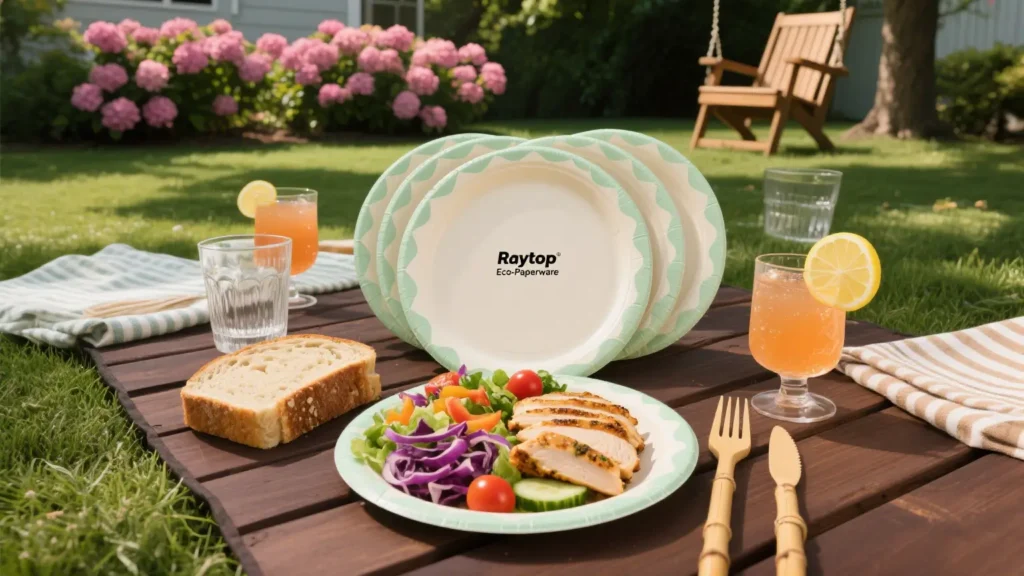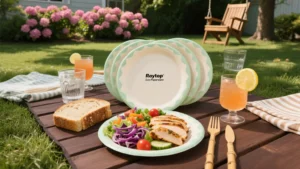Paper plate is more than just a disposable item—it’s a quiet enabler of easy, hassle-free meals. From casual gatherings to busy weekdays, it fits seamlessly into moments where cleaning up takes a backseat to enjoying the moment. Brands like Raytop have refined this simple product, turning it into a blend of convenience and care for the planet. Let’s explore where it shines, why it matters, and where it’s headed.
Paper Plate: Scenes That Call for It
Paper plate finds its place in countless daily moments, making life a little lighter. At family barbecues, it holds burgers and sides without slipping, so everyone can eat while mingling. Picnics rely on it too—lightweight and unbreakable, it fits easily in baskets without adding bulk. Kids’ birthday parties? A must: no worrying about chipped dishes, and cleanup is as simple as gathering them up. Even in small kitchens, it steps in—on busy nights, it means skipping the sink full of plates, letting families focus on time together instead of scrubbing.
Why Reach for a Paper Plate?
The appeal of a paper plate lies in its smart balance of practicality and responsibility. First, convenience: after a meal, there’s no stacking dirty dishes or waiting for the dishwasher. For outdoor events, it’s safer than glass or ceramic—no shards to clean up if it drops. Many modern paper plates, like those from forward-thinking brands, are also eco-conscious. Made from recycled or sustainably sourced paper, they break down naturally, leaving less waste than plastic alternatives. They’re also often free of harmful coatings, so serving hot or oily food doesn’t mean risking chemical leaching. In short, it’s a choice that saves time without costing the planet.
Where Paper Plates Are Most Loved
Certain regions have embraced paper plates as a daily or seasonal staple. In North America, they’re a backyard staple—summer barbecues and Fourth of July parties rarely go without them. European households turn to them for casual outdoor meals, especially in countries like Germany and France where weekend picnics are a tradition. In Asia, they’re popular during festivals: in India, for example, they’re used during Diwali gatherings to simplify serving for large crowds. Even in developing regions, their use is growing—urban areas with busy lifestyles are adopting them as a quick, affordable dining solution.
The Road Ahead: Paper Plate’s Future
The future of paper plates looks bright, driven by two key trends: sustainability and innovation. Brands are already experimenting with new materials—think bamboo fibers or agricultural waste—to make plates even more biodegradable. Some are adding water-resistant coatings from plant-based waxes, solving the old problem of sogginess without plastic. As more people prioritize eco-friendly choices, demand for these improved paper plates will rise. Market reports suggest growth in both home use and commercial settings, like cafes and food stalls, as businesses aim to cut their plastic footprint. Over time, paper plates might even replace single-use plastic plates entirely in many places.

Paper plate has come a long way from being just a “disposable.” It’s now a tool that fits modern life—busy, mindful, and always on the go. Whether at a picnic, a party, or a quiet weeknight dinner, it proves that small, practical choices can make a big difference. And as it gets greener and more reliable, its place in daily life will only grow stronger.



